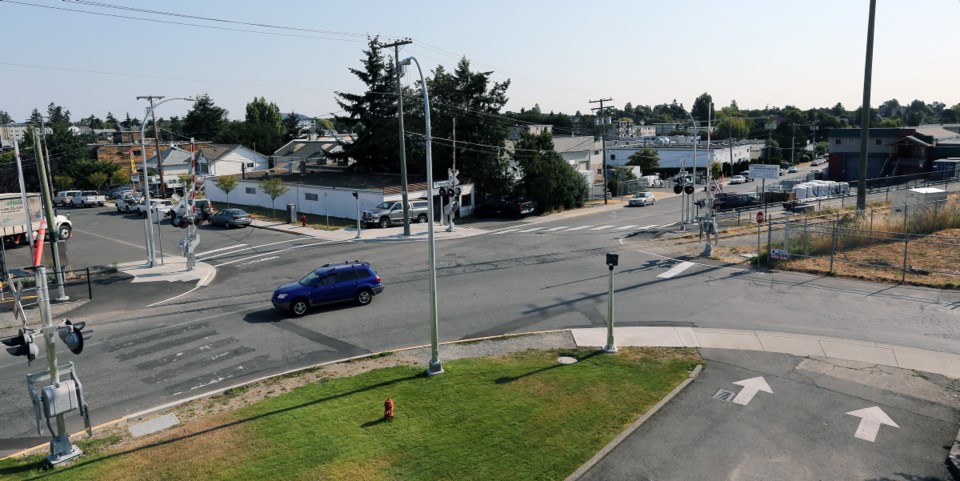 The minister responsible for bringing order to the chaos wrought by the amalgamation question on Saturday’s ballot stressed Monday how much work lies ahead.
The minister responsible for bringing order to the chaos wrought by the amalgamation question on Saturday’s ballot stressed Monday how much work lies ahead.
She can’t begin to imagine. If you think a deer cull is difficult, watch them start work on thinning the 91-member herd of local politicians.
The confusion in having 13 municipalities and a regional government run a place that’s one-seventh the size of Toronto by population was compounded when each of them was asked to something about the confusion. It just got more confusing. So Community, Sport and Cultural Development Minister Coralee Oakes’ first job is to just establish what the partial referendum means.
Five of 13 councils refused point-blank to engage. The remaining eight managed to put a question on the ballot. One of them, Esquimalt, wrote up two for good measure. Each wrote their own, some of them acting like pollsters writing questions to produce results their clients want to hear.
Oakes could have made it a lot easier on her staff if she had pursued a different scenario early on. She was asked by the Amalgamation Yes group to force the issue slightly and direct that one nonbinding question be put on all the municipal ballots.
It would have produced a much cleaner result. It didn’t happen, likely for fear of trampling on all the different fiefdoms’ turf.
But even with the patchwork result, there’s enough to go on. Despite all the game-playing, the findings are definitive enough to wade confidently into the swamp that awaits. One is whether municipalities where councils refused to put the question to a vote should be included in all the modelling to come.
It doesn’t matter. The fact people weren’t even allowed to vote can’t possibly be read as a refusal to consider the idea. Most of them are on the West Shore and they represent only 14 per cent of the region’s population. If the projections show benefits, voters should be allowed to pass judgment next time around. Only one community — Oak Bay — rejected it, and that was the place with the most negatively phrased question.
The key result is that voters in seven of the eight municipalities where votes were allowed endorsed the idea of pursuing the idea further, by a convincing overall majority of 75 per cent.
Said Oakes: “We made the commitment that if citizens say: ‘Hey, we want to look at this’ that I will certainly make resources available. It’s going to be hard work. It’s going to be complex; it’s going to be very, very difficult but we’re committed to doing that.”
She dropped a few hints that she personally likes the idea, with talk of integrated services and “new modern forms of local government.”
Earlier, she told voters it’s always valuable to start dialogue about whether current government structures are best meeting local community needs.
“It is the responsibility of all levels of government to eliminate service duplication and ensure the most efficient and effective delivery of public services,” she said.
Her version of the bottom-line question is: “Are we being efficient with our taxpayer money?”
It’s hard to look at the current map and say yes.
It’s not up to Oakes to make the final call. But a minister who is favourably inclined toward the idea can take the concept a lot further than one who isn’t.
Just So You Know: Did the amalgamation question cost Saanich Mayor Frank Leonard his job? You have to wonder. He dismissed the notion at the outset, saying people in Saanich — the key municipality in any future developments — weren’t interested. Then he grudgingly allowed for a vague, euphemistic question on the ballot, one he wrote himself. Council approved it unanimously, but it was Leonard who tried to explain it.
So how did it go over? Voters approved it by a stunning 88 per cent majority. Then they bounced the 18-year mayor out of office. He was a good mayor who misplayed a key hand. Leonard’s repudiation and the huge yes to further study will turn out to be the biggest stories from the civic votes.



